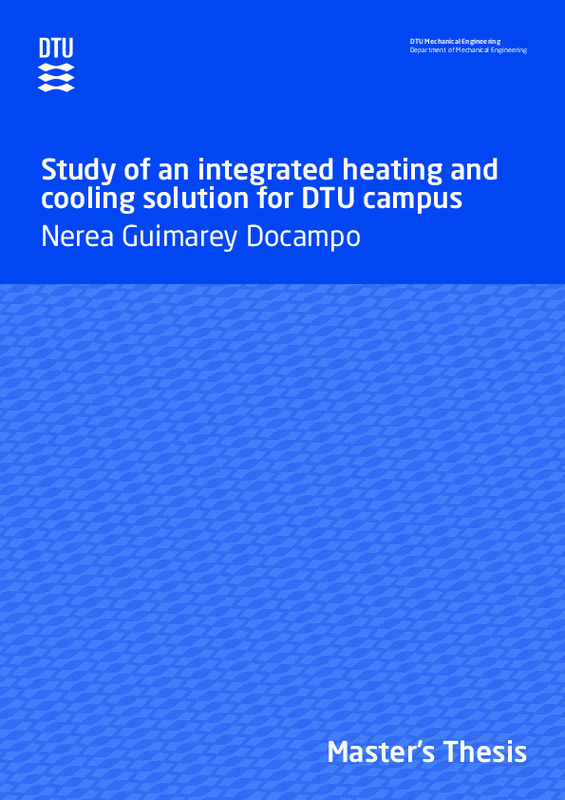|
Resumen:
|
[ES] El trabajo consiste en un estudio sobre las posibles opciones de suministrar calefacción y refrigeración simultáneamente para el campus universitario de Lyngby de la DTU (Danmarks Tekniske Universitet).
El objetivo ...[+]
[ES] El trabajo consiste en un estudio sobre las posibles opciones de suministrar calefacción y refrigeración simultáneamente para el campus universitario de Lyngby de la DTU (Danmarks Tekniske Universitet).
El objetivo del trabajo es la selección de la capacidad óptima de la bomba de calor para la producción simultánea de calefacción y de refrigeración. En el caso estudiado se utiliza el sistema de refrigeración del campus como fuente de calor para la bomba de calor. El desarrollo del modelo termodinámico de la bomba de calor se realiza en el software Engineering Equation Solver a partir de los datos de funcionamiento de los sistemas de calefacción y de refrigeración utilizados actualmente. Además, se analizan las posibilidades de otras soluciones integradas de producción así como el uso de otras fuentes de calor para la bomba de calor que puedan estar disponibles en el entorno. Todo esto se lleva a cabo, además, con un estudio económico en el que se comparan los costes asociados a la utilización de la bomba de calor, en función de la capacidad finalmente seleccionada, con los costes de la utilización de los medios convencionales de producción de calefacción y refrigeración. En este estudio económico se tiene en cuenta la variación de la demanda de calefacción y de refrigeración así como la variación de la eficiencia de la bomba de calor fuera de condiciones de diseño. Además, la demanda de calefacción y de refrigeración que no pueda ser suministrada por la bomba de calor (por no tener suficiente capacidad) se seguirá suministrando por el método actual.
[-]
[EN] This thesis investigates the possibility of installing a heat pump to produce heating and cooling
simultaneously in order to supply part of the annual demand. In the development of this study,
the possibility of ...[+]
[EN] This thesis investigates the possibility of installing a heat pump to produce heating and cooling
simultaneously in order to supply part of the annual demand. In the development of this study,
the possibility of using a single-stage cycle or a two-stage cycle is analysed, with ammonia being
the refrigerant used. Both cycles have the same design input parameters. These include heating
and cooling supply and return temperatures, among other technical parameters of thermodynamic
cycles. . The analysis of the performance of both cycles is carried out in the EES (Engineering
Equation Solver) software, where it is concluded that the two-stage cycle has better results, and
will be used for the heat pump in the development of the optimization model.
When the parameters to be used in the heat pump are known, an optimization model is developed using the GAMS (General Algebraic Modeling System) software, where the objective
function is to obtain the minimum total annual cost of the production system. A linear model is
developed, which results in the optimum capacities of the heat pump and possible storage tanks
for subsequent heating and cooling supply. In addition to including the production of heating and
cooling by means of the heat pump, there is the possibility of part of both productions being carried out by the production systems currently in operation on the campus. The optimization model
uses the results obtained in EES as input parameters in addition to the hourly heating and cooling demands expected to be obtained during a year on campus. In addition to these values, other
factors have been taken into account, such as investment and production costs.
[-]
|







